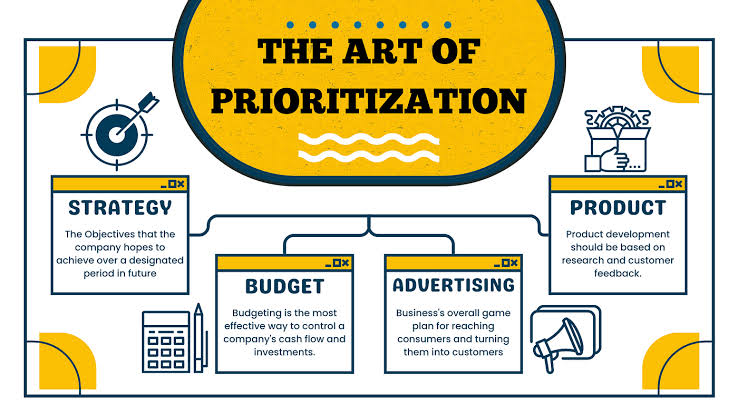In today’s fast-paced world, managing time well is more than a skill—it’s a must. With constant notifications, changing priorities, and high demands, it’s easy to feel stressed. Knowing how to prioritize tasks well is what makes someone productive, not just busy.
By July 2025, new digital tools, psychological ideas, and work trends are changing how people and companies handle tasks. Prioritizing is not just about picking what to do; it’s about knowing what needs your attention, how to use your energy, and when to say no. Learning this skill can turn confusion into clarity, lower stress, and boost both productivity and results.
Understanding the Importance of Prioritization
Prioritization is at the core of effective time management. Without it, even the most hardworking individuals can waste time on low-impact tasks while missing deadlines on high-priority ones. The challenge often lies in distinguishing between urgency and importance.
In 2025, the “busy trap” continues to be one of the biggest barriers to productivity. Many people equate activity with achievement, yet being constantly busy without strategic focus often leads to burnout rather than success. Prioritizing helps cut through the noise by focusing attention on what truly drives progress.
Effective prioritization also improves decision-making. When you know what matters most, you’re less likely to be derailed by distractions, interruptions, or other people’s agendas. This clarity helps you take ownership of your time and work intentionally rather than reactively.
Identifying Your Goals and Values
To prioritize tasks effectively, you must first know your long-term goals and core values. Without a clear sense of direction, you’ll be left responding to what seems urgent instead of aligning with what is truly meaningful.
As of July 2025, more people are using goal-setting frameworks such as OKRs (Objectives and Key Results) and personal mission statements to ensure their daily tasks reflect their larger ambitions. This approach creates alignment between action and purpose.
When tasks are evaluated against your values and goals, it becomes easier to separate the essential from the non-essential. For instance, if career development is a top goal, you’ll prioritize activities that support skill growth, visibility, or leadership opportunities over tasks that simply fill time.
Using Proven Prioritization Techniques
Several practical techniques can help structure the process of prioritization. One widely used method is the Eisenhower Matrix, which divides tasks into four categories: urgent and important, important but not urgent, urgent but not important, and neither. This method encourages individuals to spend more time on important but non-urgent tasks—like planning, learning, and relationship-building—that have long-term impact.
Another approach is the Pareto Principle, also known as the 80/20 rule, which suggests that 80 percent of results come from 20 percent of efforts. Identifying that 20 percent allows you to focus on high-leverage activities that deliver the greatest return.
In 2025, productivity apps are integrating these methods directly into digital calendars and task managers, offering smart suggestions and automated tagging based on priority, deadlines, and historical behavior. These tools help reduce the mental effort needed to make decisions and keep focus where it’s needed most.
Setting Boundaries and Saying No
A crucial yet often overlooked aspect of prioritization is the ability to say no. Without clear boundaries, people risk overcommitting and underdelivering. Prioritization requires not just choosing what to do—but consciously choosing what not to do.
In the modern workplace, where collaboration and responsiveness are valued, declining tasks or deferring meetings can feel uncomfortable. However, in 2025, there is a growing recognition that focus is a limited resource, and protecting it is essential for performance and well-being.
Setting boundaries also involves managing expectations. Communicating your priorities to colleagues, supervisors, or clients helps create transparency and trust. When people understand that your decisions are based on strategic focus—not avoidance—they’re more likely to respect your time.
Managing Energy Alongside Time
Not all hours in the day are created equal. Prioritizing tasks also involves understanding your personal energy cycles—when you’re most alert, focused, and creative—and scheduling accordingly. Matching high-priority tasks with peak energy periods boosts productivity significantly.
In July 2025, wearable devices and wellness platforms are helping individuals monitor their cognitive performance throughout the day. These insights can inform scheduling decisions, such as tackling deep work in the morning and saving administrative tasks for later.
By being attuned to your energy, you avoid wasting high-effort periods on low-impact activities. You also reduce the risk of burnout by building rest and recovery into your schedule, ensuring sustainable productivity.
Reviewing and Adjusting Regularly
Effective prioritization is not a one-time activity—it’s an ongoing process. Circumstances change, goals evolve, and new information emerges. Regular reviews help keep your priorities aligned and relevant.
As of 2025, many professionals perform weekly or daily reviews using tools like bullet journals, habit trackers, or digital dashboards. These reviews involve asking key questions: What progress did I make? What should I continue, stop, or adjust? What’s most important next?
These moments of reflection improve self-awareness and allow you to correct course before small misalignments become major setbacks. They also reinforce discipline and help you stay connected to your larger purpose.
Conclusion: Taking Control of What Matters
The art of prioritizing tasks effectively is not just about managing a to-do list—it’s about managing your life with clarity, intention, and purpose. In a world that is louder and faster than ever, those who prioritize well gain a competitive edge in both their careers and personal lives.
As of July 2025, the tools, techniques, and mindsets needed to prioritize effectively are more accessible than ever. But success still depends on one critical factor: your willingness to take ownership of your time and energy.
By identifying what truly matters, applying structured methods, and staying adaptable, you can transform your workflow, reduce stress, and move confidently toward your goals. Prioritization is not about doing more—it’s about doing what matters most.



